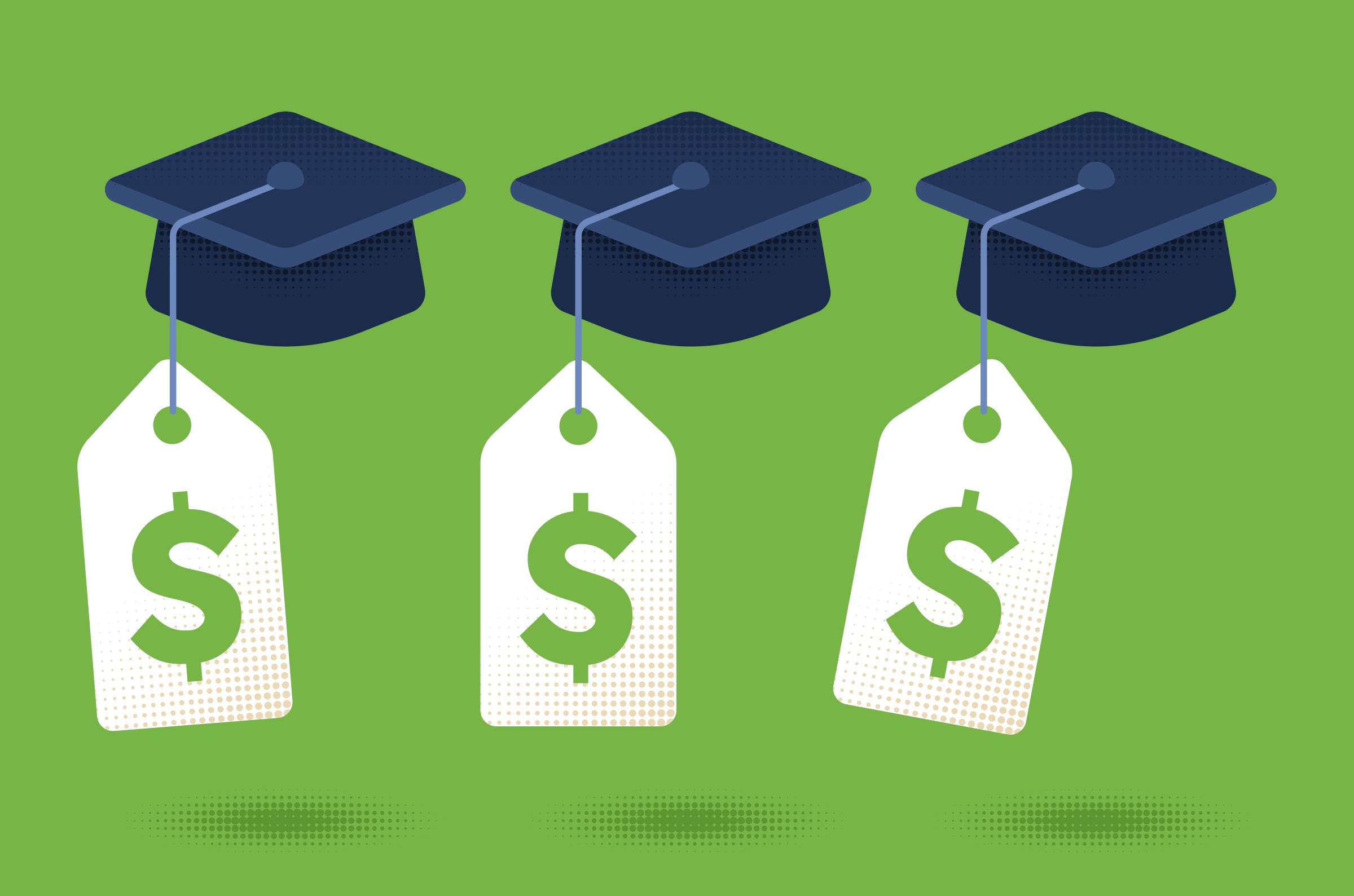Understanding Student Loans
Navigating the world of student loans can be overwhelming, especially for first-time borrowers. With the rising costs of education, understanding the intricacies of student loans is crucial for securing your financial future. This guide will help you grasp the various types of student loans, the application process, repayment options, and tips for managing your debt effectively.

What Are Student Loans?
Definition of Student Loans
Student loans are funds borrowed to pay for education-related expenses, which typically include tuition, fees, books, and living costs. Unlike other loans, they are specifically designed for students and often come with lower interest rates and more flexible repayment terms.
Purpose and Importance of Student Loans
In today’s economy, a college degree is increasingly viewed as a necessity for securing a well-paying job. However, the cost of higher education has skyrocketed in recent years, making student loans a vital resource for many. These loans enable students to finance their education and invest in their futures, allowing them to pursue degrees that can significantly enhance their earning potential.
Types of Student Loans
When considering student loans, it’s important to understand the different types available.
Federal Student Loans
Federal student loans are funded by the government and offer several benefits, including fixed interest rates and various repayment options. The most common types include:
Direct Subsidized Loans
These loans are available to undergraduate students with demonstrated financial need. The key benefit is that the government pays the interest while the student is in school, during the grace period, and during deferment.
Direct Unsubsidized Loans
Available to both undergraduate and graduate students, these loans do not require proof of financial need. However, interest accrues from the time the loan is disbursed.
PLUS Loans
These loans are designed for graduate students or parents of dependent undergraduate students. PLUS loans require a credit check and may have higher interest rates compared to subsidized and unsubsidized loans.
Private Student Loans
Private student loans are offered by banks, credit unions, and other financial institutions. They can be useful for filling any gaps after federal loans, but they often come with higher interest rates and fewer protections.
Differences Between Federal and Private Loans
- Interest Rates: Federal loans have fixed rates, while private loans may have variable rates that can increase over time.
- Repayment Options: Federal loans offer various repayment plans, including income-driven repayment. Private loans typically have less flexibility.
- Loan Forgiveness: Federal loans may qualify for forgiveness programs, whereas private loans usually do not.
How to Apply for Student Loans
Navigating the application process can be daunting, but following a structured approach can simplify it.
Step-by-Step Application Process
- Complete the FAFSA: The Free Application for Federal Student Aid (FAFSA) is the first step in applying for federal student loans. It determines your eligibility for financial aid.
- Gather Required Documentation: Prepare your Social Security number, tax returns, and information on your family’s financial situation.
- Review Loan Offers: After submitting the FAFSA, you’ll receive financial aid offers from your school. Compare these offers carefully.
Tips for a Successful Application
- Apply Early: Many federal and state aid programs have limited funding, so it’s essential to apply as soon as possible.
- Double-Check Information: Ensure that all information on your FAFSA is accurate to avoid delays in processing.
Understanding Interest Rates
Interest rates are a crucial aspect of student loans that can significantly affect your overall debt.
Fixed vs. Variable Rates
- Fixed Rates: These remain constant throughout the life of the loan, making it easier to budget your payments.
- Variable Rates: These can fluctuate over time, potentially leading to higher payments in the future.
How Interest Rates Are Determined
Interest rates for federal student loans are set by Congress, while private lenders base their rates on various factors, including credit scores and market conditions. Understanding how these rates work can help you choose the best loan for your needs.
Repayment Options
Choosing the right repayment plan is vital to managing your student loan debt effectively.
Standard Repayment Plan
This plan offers a fixed monthly payment over a 10-year term. It’s straightforward but may result in higher payments.
Income-Driven Repayment Plans
These plans adjust your monthly payments based on your income and family size. Options include:
- PAYE (Pay As You Earn): Caps payments at 10% of your discretionary income.
- REPAYE (Revised Pay As You Earn): Similar to PAYE but covers a broader range of borrowers.
- IBR (Income-Based Repayment): Payments are capped at 15% of discretionary income.
- ICR (Income-Contingent Repayment): Offers flexible payments based on income and loan balance.

Loan Forgiveness Programs
Some borrowers may qualify for loan forgiveness programs, such as Public Service Loan Forgiveness (PSLF), which cancels the remaining loan balance after 120 qualifying payments.
Managing Student Loan Debt
Successfully managing your student loan debt requires strategic planning and budgeting.
Creating a Budget
Develop a monthly budget that includes your loan payments, living expenses, and savings goals. This helps ensure you can meet your financial obligations without sacrificing your quality of life.
Strategies for Paying Off Student Loans
- Snowball Method: Pay off your smallest loans first to build momentum.
- Avalanche Method: Focus on paying off the loans with the highest interest rates first to minimize costs.
Resources for Student Loan Management
Several organizations provide resources and tools to help manage student loans, including:
Frequently Asked Questions (FAQs)
How Do I Know How Much I Should Borrow?
It’s essential to borrow only what you need. Consider your future earning potential and weigh it against your expected expenses.
What Happens If I Can’t Make a Payment?
If you face financial hardship, contact your loan servicer to discuss options like deferment, forbearance, or income-driven repayment plans.
Can Student Loans Be Consolidated?
Yes, federal student loans can be consolidated into a Direct Consolidation Loan, simplifying repayment. However, be cautious as consolidation may affect your interest rate and eligibility for certain benefits.
In the next section, we will cover the conclusion and wrap up the article, summarizing the key points regarding student loans and their management. Understanding these aspects will empower you to make informed decisions about your education financing.
Conclusion
Navigating the complex landscape of student loans requires careful planning and informed decision-making. Understanding the different types of loans available, the application process, and the repayment options can empower you to make choices that will set you up for financial success. With the right knowledge and resources, you can manage your student loan debt effectively and focus on achieving your educational goals.
Key Takeaways
- Types of Student Loans: Familiarize yourself with the differences between federal and private loans to determine which options best meet your needs.
- Application Process: Start early by completing the FAFSA, and ensure all information is accurate to maximize your eligibility for federal aid.
- Repayment Strategies: Explore various repayment options, including income-driven plans and loan forgiveness programs, to find the most suitable approach for your situation.
Further Resources
To help you stay informed and empowered in your student loan journey, consider exploring the following resources:
- Federal Student Aid: Your primary source for federal financial aid information.
- National Student Loan Data System (NSLDS): Access your federal loan information and track your borrowing.
- Consumer Financial Protection Bureau (CFPB): Offers valuable insights and tools for managing student loans.

FAQs
What Are the Consequences of Defaulting on Student Loans?
Defaulting on your student loans can have serious consequences, including damaged credit, wage garnishment, and loss of eligibility for future federal aid. It’s crucial to communicate with your loan servicer if you’re struggling to make payments.
Are There Grants or Scholarships Available to Help With Student Loans?
Yes, numerous scholarships and grants can help offset educational costs. Research local, state, and federal programs to find opportunities that align with your field of study or personal background.
Can I Refinance My Student Loans?
Refinancing is an option for both federal and private student loans, allowing you to consolidate your debt under potentially more favorable terms. However, be cautious, as refinancing federal loans can result in the loss of certain benefits, such as income-driven repayment plans.
How Can I Stay Updated on Changes in Student Loan Policies?
Stay informed by regularly checking resources like Federal Student Aid and subscribing to financial news outlets that cover education and student loan topics.
Final Thoughts
The burden of student loans can feel overwhelming, but with the right strategies and support, it is manageable. Educate yourself about your options, make informed choices, and take proactive steps to handle your loans effectively. Remember, the knowledge you gain today can lead to a brighter financial future tomorrow.

By staying proactive in your approach to student loans, you can navigate your educational journey with confidence and work towards a debt-free future. Always remember to utilize available resources, seek advice when needed, and make your financial wellness a priority.

